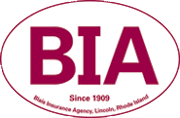BIA Insurance Blog

BIA Insurance Blog
Written by Edward L. Blais, JD, CIC, CPIA
No Results Found
The page you requested could not be found. Try refining your search, or use the navigation above to locate the post.
Before the Next Storm Hits, Prepare Your Home for Winter Weather
By: Edward L. Blais, JD, CIC, CPIA
Winter can be tough on a home, especially if you have not taken the necessary steps to prepare for the harsh weather. There are many affordable winterization projects that are relatively easy and affordable to accomplish. Significant damage can hinder the comfort, safety and integrity of your house throughout the colder, wetter months.
One of our valued insurance company partners, Selective, has summarized the following key measures that should be taken to prepare your home and property for winter.
Energy-efficient improvements
The steps you need to take to keep your heating costs down can also be viewed as protective for your home’s structure and systems. The following steps can help to boost your home’s efficiency and protect it from common damages associated with winter weather:
- Bring in a licensed professional service provider to prepare your air conditioner, water, fuel, vent and all other systems and pipes.
- Consider replacing standard doors and windows with stormproof products.
- Get your furnace serviced and change out filters that were used last winter.
You will also want to thoroughly evaluate your home for drafts and leaks, which are most common in attics, crawl spaces and basements, but can be found virtually anywhere. One of the easiest ways to check for drafts is to light a candle in the center of each room of the home and watch to see if the flame flickers or bends. Once you’ve identified the drafts, use weatherstripping and caulk to seal them.
Roof and drainage
To prevent flooding both in the home and outside, you will need to prep your roof and irrigation system.
Here are a few tips:
- Cleaning and removal: Clear all gutters of leaves and other debris before the first heavy snowfall. Remove snow from the roof during times of very heavy precipitation.
- Ice dams: Ice dams can be an issue if you have a sloped roof. Consider putting ice melt products that contain calcium chloride into a porous material, such as a stocking, and placing it on ice dams for safe, easy removal.
- Avoid floods: Always make sure the roof’s drainpipes are pointed away from the house, and that your irrigation system and lawn have been winterized to avoid damage from the increased precipitation.
Protective measures for plumbing
Frozen pipes can lead to massive expenses and damages. Consider wrapping all exposed pipes and plumbing with insulation. You will need to keep your valves and taps open to prevent water from staying in the pipes, which can lead to freezing and expansion, followed swiftly by cracks and damage.
Even when you are not home, the home’s temperature should be warm enough to prevent freezing of any kind. This can be trickier for pipes that are outside or in parts of the home that do not have access to heat. When temperatures dip below freezing, keep your water dripping in sinks and other faucets to prevent further freezing and bursting in the pipes and plumbing.
Get the right coverage
Ensure that your insurance provides the coverage you need for your home this winter. For a review of your homeowners insurance policy, please call Blais Insurance at 725.0070 and we would be happy to sit down with you to ensure that your insurance coverage is still meeting your specific needs.
401-725-0070
One Walker Street
Lincoln, RI 02865

Office Hours:
Monday-Friday
9AM to 5PM
Closed Saturday
